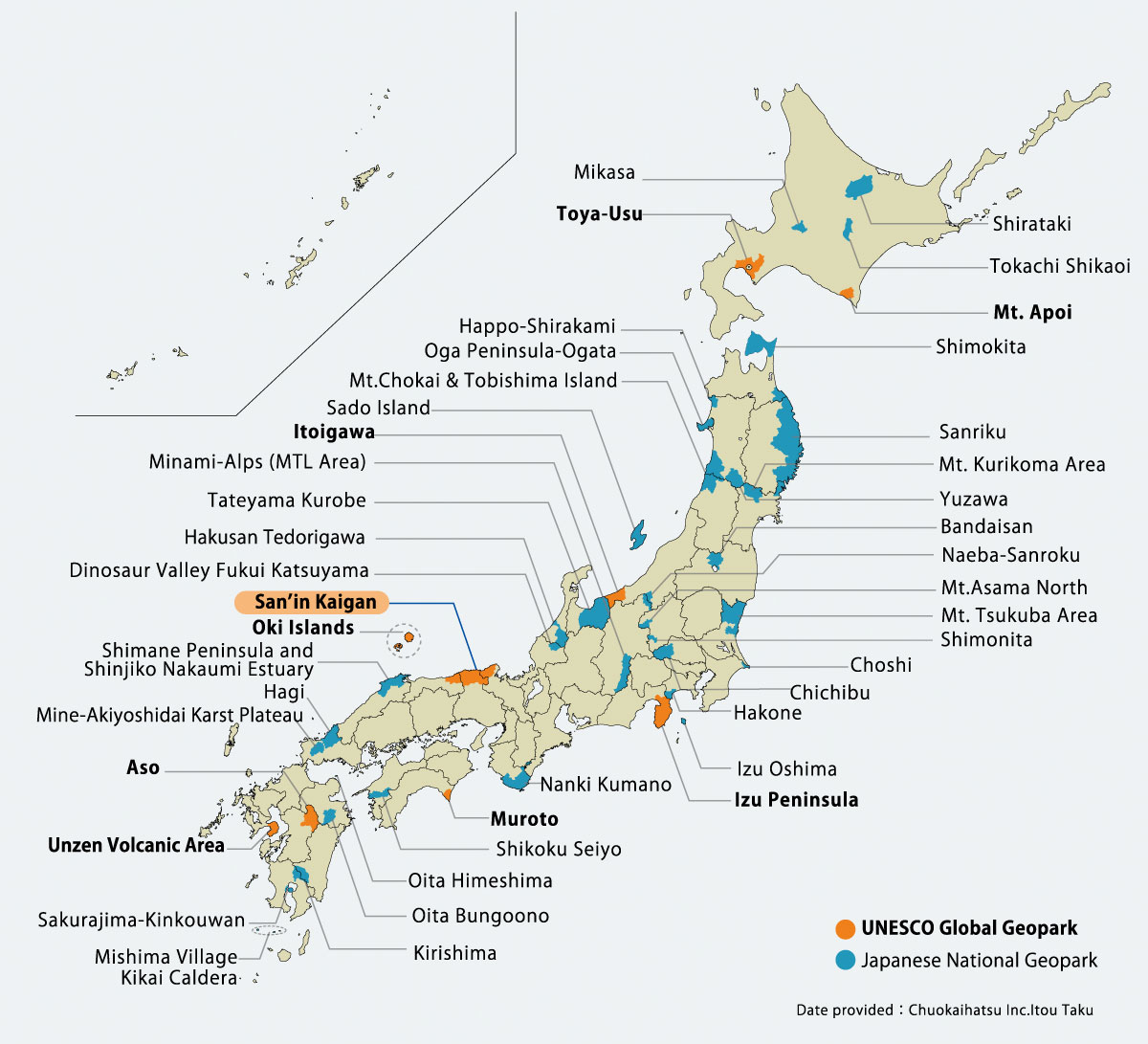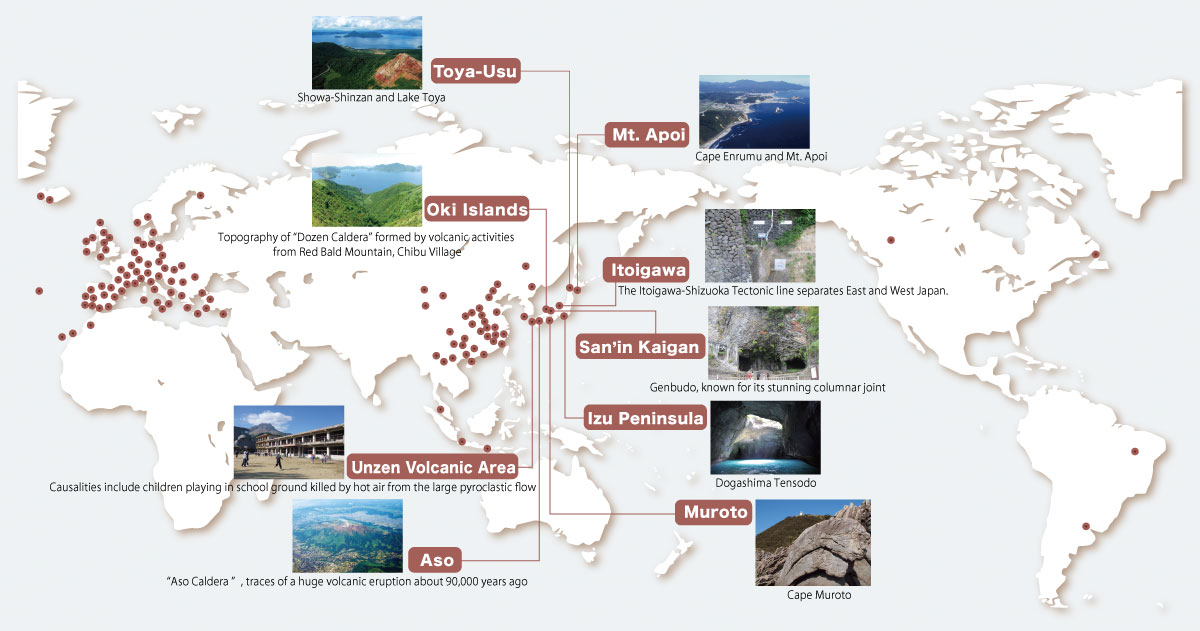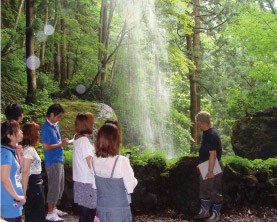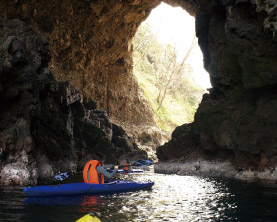“Geo” is a root word referring to the Earth and land, so Geopark is a title given to natural park areas that have important scientific significance or natural beauty.
Geology and topography are deeply implicated in the history and culture of the world. Geoparks offer a place to learn about the importance of the Earth and its development.
The Geopark system was established in 2004 under the support of UNESCO through the Global Geoparks Network (GGN).
Geology and topography are deeply implicated in the history and culture of the world. Geoparks offer a place to learn about the importance of the Earth and its development.
The Geopark system was established in 2004 under the support of UNESCO through the Global Geoparks Network (GGN).
San’in Kaigan Geopark Area
The San’in Kaigan Geopark encompasses a large area spanning Kyoto Prefecture (Kyotango), Hyogo Prefecture (Toyooka-shi, Kami-cho, Shin’onsen-cho), and Tottori Prefecture (Iwami-cho, Tottori-shi). It encompasses the San’in Kaigan National Park and spans an area 110km from east to west and 30km from north to south from Kyoga Misaki in Kyoto Prefecture to the Hakuto coast in Tottori Prefecture. Its area is 2,185.95km2, or larger than Osaka Prefecture and approximately the size of Tokyo Prefecture.
Global geoparks and Japanese geoparks
Global geoparks are areas designated as part of the Global Geopark Network. As of September 2013, Geoparks can be found in 29 countries and 100 territories around the world, Japan included. There are six global Geoparks recognized within Japan: they are the Toyo Usu Geopark, the Itoigawa Geopark, the Shimabara Peninsula, San’in Kaigan Geopark, Muroto, and the Oki Islands.
The Japanese Geoparks Network is a Japanese version of this system in which Geoparks are recognized by the Japanese Geopark Committee. As of December 2013, there are parks in 33 sites in Japan. Japanese geology is quite complex and varied even in a global context, and there are numerous natural phenomena to explore, meaning Japan itself has the qualities inherent to a Geopark.
The Japanese Geoparks Network is a Japanese version of this system in which Geoparks are recognized by the Japanese Geopark Committee. As of December 2013, there are parks in 33 sites in Japan. Japanese geology is quite complex and varied even in a global context, and there are numerous natural phenomena to explore, meaning Japan itself has the qualities inherent to a Geopark.

Requirements to becoming a Global Geopark
An area must meet the requirements below to qualify as a Global Geopark.
– The area must be a specifically designated zone with area of at least a moderate size, and have not only geographical value, but also biological, archaeological, historical, or cultural value.
– The area must have a specific plan and strategy for operation that revolves around local residents and also incorporates public organs, private organizations, and/or research institutes.
– Efforts must be made to develop the sustainability of the area and vitalize the economy through tourism or other initiatives.
– Educational and promotional activities must be pursued through museums, nature tours, guided tours, et cetera.
– Proper measures and substantive protection of the area must be employed.
– As a member of a global network, the Geopark must engage in mutual exchange of information, take part in meetings, and actively vitalize the network.
– The area must be a specifically designated zone with area of at least a moderate size, and have not only geographical value, but also biological, archaeological, historical, or cultural value.
– The area must have a specific plan and strategy for operation that revolves around local residents and also incorporates public organs, private organizations, and/or research institutes.
– Efforts must be made to develop the sustainability of the area and vitalize the economy through tourism or other initiatives.
– Educational and promotional activities must be pursued through museums, nature tours, guided tours, et cetera.
– Proper measures and substantive protection of the area must be employed.
– As a member of a global network, the Geopark must engage in mutual exchange of information, take part in meetings, and actively vitalize the network.
– Site designated as a Global Geopark and Japanese Geopark within Japan
– Site designated as a Global Geopark






